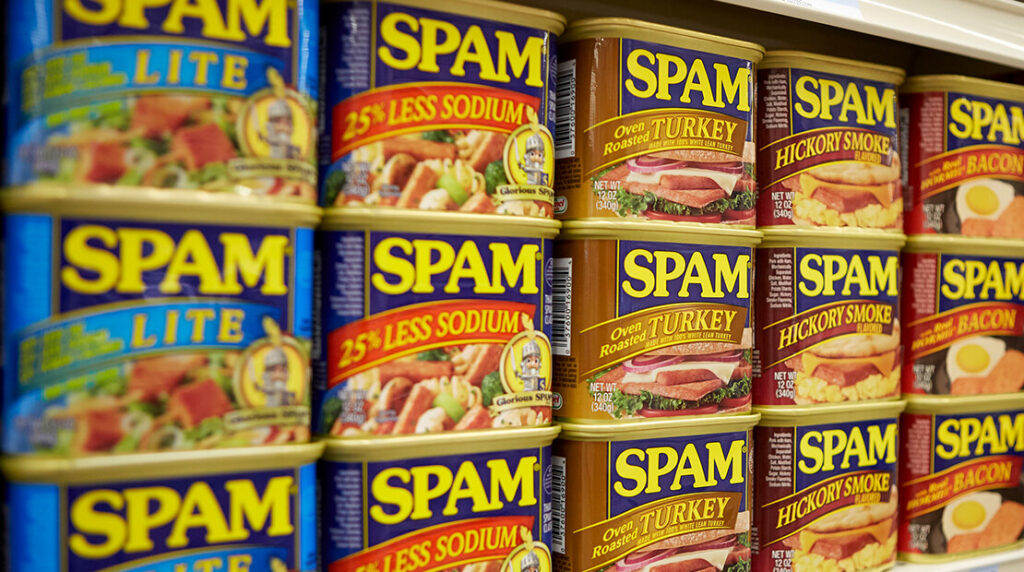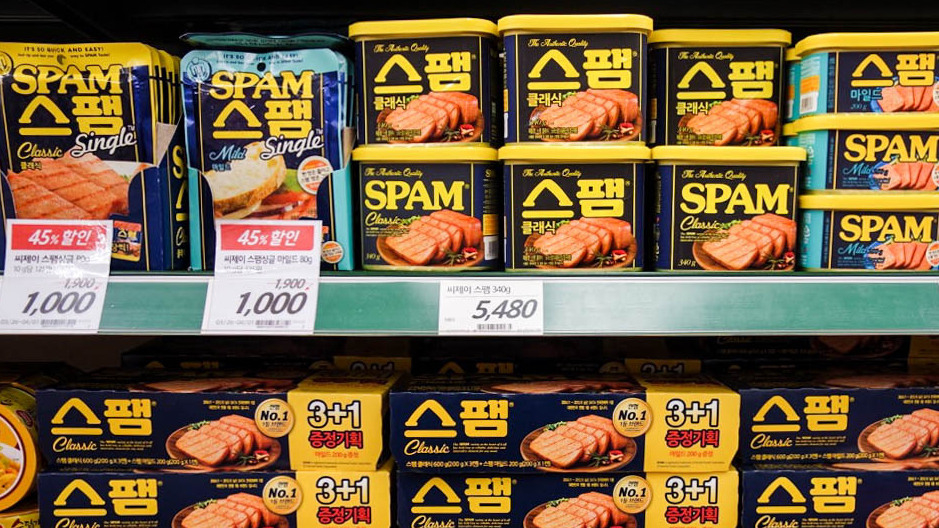As the saying goes, “Spam is good for you.” It can be a powerful tool for promoting weight loss products and services. The problem is that spam filters often block spam, so you must use it carefully. And if you don’t, you may be banned from sending out your spam. So how do you use spam effectively to promote your weight loss products and services? How do you get around spam filters and avoid getting banned?
Spam is a canned meat product that has been popular in the United States since the 1930s. It is made from chopped pork and ham and is known for its salty and savory flavor. Spam has been a staple in many American households, but there has been a recent trend of people using it for weight loss. This article will explore whether spam is good for weight loss.
What is Spam?

Spam is a canned meat product that is made from pork and ham. The Hormel Foods Corporation introduced it in 1937, quickly becoming popular because of its long shelf life and affordable price. Spam has been used in many dishes, including sandwiches, casseroles, and fried rice. It is known for its high sodium content, so some people think it might be good for weight loss.
The Claim: Spam is good for weight loss
The claim that spam is good for weight loss has been circulating on social media and various forums. The reasoning behind this claim is that spam is low in carbohydrates and protein, making it a good food choice for people trying to lose weight.
Protein is an essential nutrient necessary for building and repairing muscle tissue. It is also known for its ability to help people feel full for longer periods. When people feel full, they are less likely to overeat, which can lead to weight gain.
Sodium in high amounts in spam can also help with weight loss. Sodium helps to regulate the body’s fluid balance, and it can cause the body to excrete excess water weight. This can make people feel lighter and lead to a temporary decrease in weight.
However, it is important to note that the weight loss benefits of spam are not significant, and they should not be relied upon as a sole weight loss strategy. Eating spam alone will not lead to substantial weight loss; it should be consumed as a balanced diet.
Also Read. Is pinalim tea good for weight loss?
The Reality: Spam is not a healthy food choice
While spam contains high amounts of protein, it is not a healthy food choice for people trying to lose weight. Spam is high in sodium, leading to high blood pressure, heart disease, and stroke. It is also high in saturated fat, which can contribute to the development of heart disease.
One can of spam contains about 1,180 milligrams of sodium; nearly half of the adults recommended daily sodium intake. Too much sodium can cause the body to retain water, leading to bloating and weight gain.
Additionally, spam is highly processed and contains many additives and preservatives. These additives and preservatives can harm the body and lead to inflammation, contributing to weight gain.
While spam can be part of a healthy and balanced diet, it is not a food that should be relied upon for weight loss. Many other foods are higher in protein and lower in sodium and saturated fat, which are better choices for people trying to lose weight.
Why do Koreans like Spam so much?

Spam is a canned meat product made from chopped pork shoulder and ham, introduced in the United States in 1937. Over the years, it has become a popular food item in many parts of the world, including Korea. While the exact reasons for Spam’s popularity in Korea are unclear, a few theories attempt to explain this phenomenon.
- Historical Context
One theory suggests that Spam’s popularity in Korea is linked to the country’s history. After World War II, Korea was one of the poorest countries in the world, and many people struggled to afford meat. Low and readily available, spam became a staple food item for many families. During the Korean War, American soldiers stationed in Korea also introduced Spam to the local population, and its popularity grew.
- Taste Preferences
Another theory is that Koreans enjoy the taste of Spam. Korean cuisine has a long history of using meat in various dishes, and Spam’s salty, savory flavor is a good match for many Korean dishes. Additionally, Spam is easy to cook and can be used in many dishes, from Spam fried rice to Spam stew. Spam is so versatile that it has been used in traditional Korean dishes like kimchi jjigae (kimchi stew) and budae jjigae (army base stew).
- Marketing and Branding
Spam’s popularity in Korea may also be due to effective marketing and branding. The makers of Spam have actively promoted their product in Korea through various marketing campaigns, including sponsoring K-pop concerts and creating limited-edition packaging featuring popular Korean celebrities. Spam has also been marketed as a symbol of status and affluence in Korea, with some people even giving Spam as a gift during holidays like Chuseok (Korean Thanksgiving).
- Nostalgia and Tradition
Finally, Spam’s popularity in Korea may be due to nostalgia and tradition. Many Koreans who grew up during the post-war period have fond memories of eating Spam, which has become a part of their culinary identity. In recent years, there has been a trend of “retro” and “throwback” foods in Korea, and Spam fits this trend perfectly. Additionally, Spam is often associated with holidays like Chuseok and Lunar New Year, and many Koreans feel that these celebrations would not be complete without Spam on the table.
There are several possible reasons why Koreans like Spam so much, including historical context, taste preferences, marketing and branding, and nostalgia and tradition. Regardless of the reason, Spam has become an integral part of Korean cuisine and culture, and it is likely to remain popular in Korea for years to come.
Who eats Spam the most?

Spam is a popular canned meat product that the Hormel Foods Corporation first introduced in the United States in 1937. Since then, Spam has become a cultural icon and a portion of beloved food in many parts of the world. While it’s difficult to determine with certainty who eats Spam the most, here are some insights on the popularity of Spam in different regions:
United States:
The United States is the birthplace of Spam, which continues to be a popular food item in many parts of the country. Hawaii has one of the world’s highest per capita consumption rates of Spam. Spam musubi, a popular Hawaiian snack, is made by placing a slice of grilled Spam on top of a block of rice and wrapping it with nori seaweed. Spam is also popular in other parts of the United States, particularly in the Midwest and the South.
South Korea:
South Korea is one of the largest consumers of Spam in the world. Spam was introduced to South Korea during the Korean War when the U.S. military provided it as a food ration. Since then, Spam has become a staple in Korean cuisine and is commonly used in dishes like budae jjigae (army stew) and kimchi jjigae (kimchi stew).
Philippines:
Spam is also popular in the Philippines, where it is used in various dishes, including Spam fried rice, Spam adobo, and Spam sandwich. The Philippines is one of the top consumers of Spam in the world, and Hormel Foods has even created a unique Spam flavor exclusive to the country.
Guam:
Guam, a U.S. territory in the Western Pacific, is another place where Spam is a beloved food. Spam is used in many Chamorro dishes, such as Spam kelaguen, made by mixing chopped Spam with lemon juice, onions, and hot peppers.
Other countries:
Spam is also popular in other parts of the world, including Japan, where it is used in dishes like Spam onigiri (rice ball), and in parts of the Caribbean, where it is used in dishes like Spam and eggs.
While it’s difficult to determine who eats Spam the most, it is a popular food item in many parts of the world, particularly in the United States, South Korea, the Philippines, Guam, and Japan.
Conclusion:
Spam is a popular canned meat product that has been around for decades. While it contains high amounts of protein, it is not a healthy food choice for people trying to lose weight. Spam is high in sodium and saturated fat, which can contribute to the development of heart disease and other health issues.
While spam can be part of a healthy and balanced diet, it should not be relied upon as a sole weight loss strategy. People trying to lose weight should focus on eating a variety of whole foods high in protein and low in sodium and saturated fat.
Is there a healthy version of Spam?
Spam is a canned meat product made primarily from pork and ham. While it is high in protein, it is also high in fat and sodium. It is not typically considered a healthy food, and there is no “healthy version” of Spam.
How many calories does 1 slice of Spam have?
One slice of Spam (about 22 grams) contains around 80 calories.
How many calories are in 2 slices of Spam?
Two slices of Spam (about 44 grams) would contain around 160 calories.
Is Spam junk food?
Spam is often considered a processed or “junk” food because of its high fat and sodium levels. However, like many foods, it can be enjoyed in moderation as part of a balanced diet. It is important to pay attention to portion sizes and balance your Spam intake with other nutrient-dense foods.
